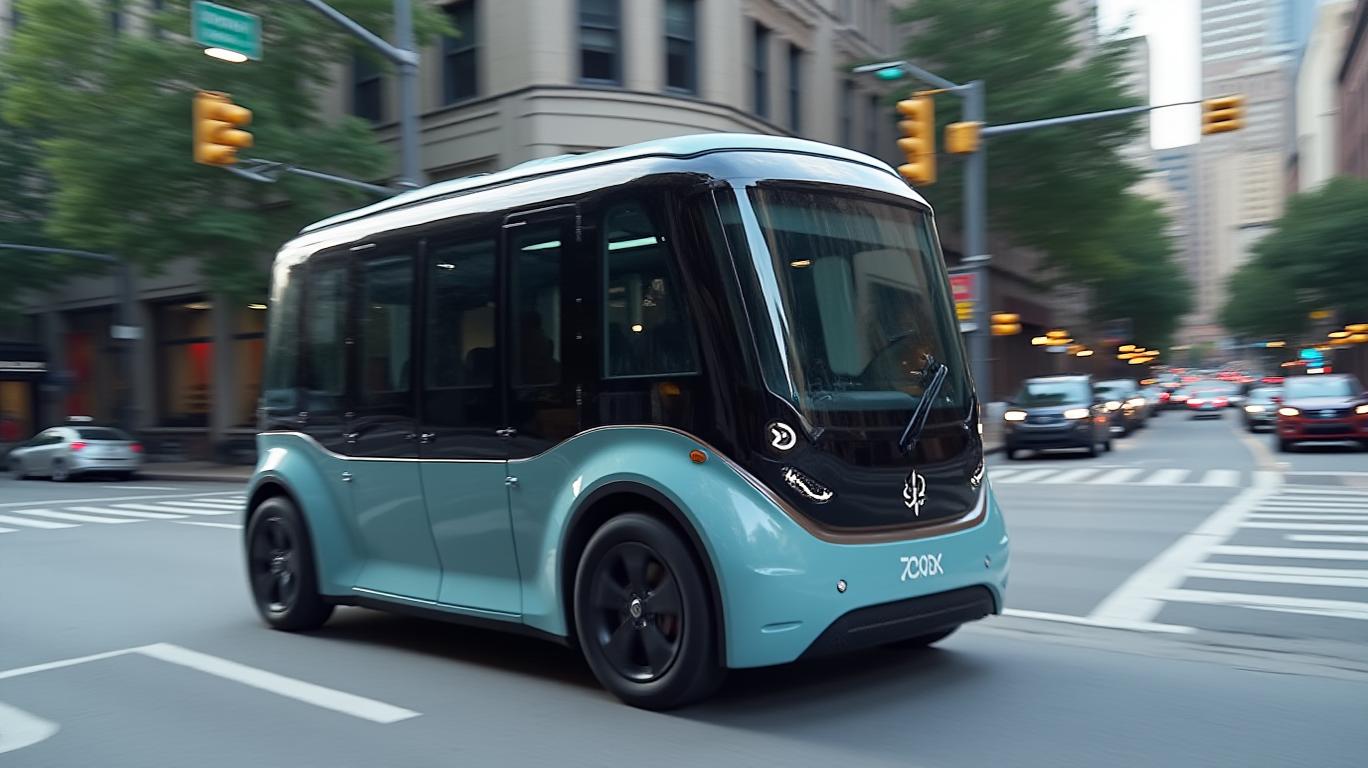Zoox's Atlanta Gambit: Can Amazon's Autonomous Ambition Outpace the Robotaxi Race?

The autonomous vehicle revolution is accelerating, and Atlanta has become Ground Zero for the battle between tech giants. Amazon’s Zoox, the company’s high-stakes bet on driverless taxis, is now testing its purpose-built vehicles in Atlanta—a market critical to its ambition to rival Waymo and Tesla. But can Zoox overcome manufacturing bottlenecks, regulatory hurdles, and fierce competition to carve out a dominant position? The answer could determine whether this $6 billion investment becomes a crown jewel or a cautionary tale.
Competitive Positioning: Zoox’s Unique Edge in a Crowded Field
Zoox’s advantage lies in its custom-built vehicles, which lack traditional steering wheels and pedals, offering a clean-sheet design optimized for autonomy. Unlike Waymo, which repurposes existing EVs (e.g., Jaguar SUVs), Zoox’s vehicles feature conference-style seating and a symmetrical design for seamless bidirectional travel. This innovation could position Zoox as the premium player in urban mobility, targeting tech-savvy consumers and corporate clients seeking cutting-edge transportation.
However, Zoox’s slow ramp-up contrasts sharply with Waymo’s aggressive expansion. Waymo’s partnership with Uber—already live in Atlanta—has given it a head start. By mid-2025, Waymo’s fleet of over 1,000 autonomous vehicles will serve Uber’s 130 million U.S. users, while Zoox’s fleet remains under 300 vehicles, constrained by its proprietary manufacturing process.
Regulatory Challenges: Navigating the Fast Lane of Policy
The U.S. Department of Transportation’s March 2025 rules, which fast-track autonomous vehicle approvals, have created a tailwind for Zoox. These regulations, including waivers for traditional safety standards (e.g., sideview mirrors), reduce deployment delays. Zoox’s April 2025 software recall—a minor collision in Las Vegas—was swiftly addressed with updates to improve “intent prediction” in merging scenarios. This responsiveness suggests Zoox can adapt to evolving safety demands, a critical factor as regulators scrutinize autonomous systems.
Yet risks persist. Atlanta’s congestion and unpredictable driver behavior present unique testing challenges. A misstep here could delay approvals in other cities. Meanwhile, Waymo’s established safety record and partnerships with regulators give it a leg up in navigating these hurdles.
Scalability: The Manufacturing Mountain
Zoox’s custom design is both its strength and its Achilles’ heel. While rivals like Waymo can retrofit existing EVs at scale, Zoox’s vehicles require specialized assembly lines, limiting production to 1,000 units annually by 2026. In contrast, Waymo plans 10,000 units by 2027. This gap raises questions about Zoox’s ability to meet demand in Atlanta and beyond.
But Amazon’s financial muscle—$15 billion allocated to Zoox’s development—could bridge this divide. A potential pivot to hybrid manufacturing (e.g., repurposing some vehicles for select routes) might accelerate deployment without sacrificing core innovation.
The Investment Case: A High-Risk, High-Reward Play
Atlanta’s status as a “ride-hailing megacity” with 12 million annual trips makes it a must-win market. Zoox’s early data collection and partnerships with local infrastructure projects (e.g., the Atlanta Beltline’s autonomous shuttle pilot) suggest it’s laying groundwork for long-term dominance.
While Waymo leads today, Zoox’s differentiation could pay off as consumers prioritize premium experiences. Amazon’s logistics network also provides an edge: its warehouses could serve as charging hubs, reducing operational costs.
Risks to Consider
- Manufacturing Delays: Scaling Zoox’s proprietary vehicles may take longer than expected.
- Regulatory Setbacks: Atlanta’s complex urban environment could expose software flaws.
- Competition: Waymo’s Uber partnership and Tesla’s Cybercab (launching in Austin in June 2025) are formidable rivals.
Conclusion: Time to Bet on Zoox’s Future
Zoox’s Atlanta expansion is a pivotal test of its vision. While risks are real, the combination of Amazon’s resources, Zoox’s proprietary tech, and favorable regulations creates a compelling upside. For investors, now is the time to act: the robotaxi market is projected to hit $215 billion by 2030, and Zoox’s early moves in Atlanta could secure it a leadership position.
The stakes are clear: ride out the turbulence of this nascent industry, and Zoox could be the next unicorn in autonomous mobility. The question is, can you afford not to invest?
Disclosure: This analysis is for informational purposes only and should not be construed as investment advice.

Comments
No comments yet